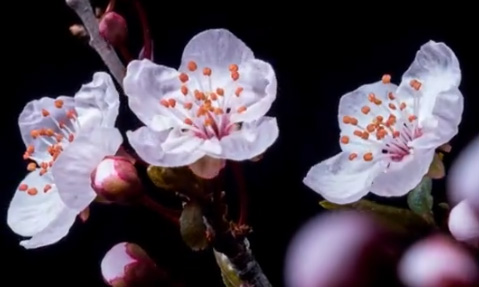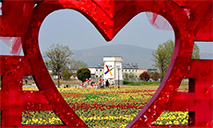Inner Mongolia grasslands in grazing moratorium to grow grass
HOHHOT, April 13 (Xinhua) -- Lu Shuping, a herder in Xilin Gol League Grasslands, has kept his sheep flock in a pen since April as the grasslands entered a 45-day grazing moratorium for nurturing growing grass.
"I have reduced my flock to cope with the grazing ban. Compared with the past, although the number declines, the flock's quality has improved, and the ecosystem gets better," said Lu, living in Sonid Right Banner, a county in north China's Inner Mongolia Autonomous Region.
Lu owns more than 7,000 mu (around 467 hectares) pasture, raising 120 sheep. He has prepared ample forage since March for his flock to live through the grazing moratorium.
As the widest grasslands in Inner Mongolia, Xilin Gol grasslands make up 89.95 percent of the league's area.
According to the league authority, this year's grazing ban area breaks the record, reaching 250 million mu and accounting for 92.4 percent of the grasslands coverage.
Herders are entitled to 1.1 yuan per mu (around 2.6 U.S. dollars per hectare) in ecological subsidies to prohibit their cattle and sheep grazing in pastures.
The league is the pilot in Inner Mongolia for implementing the spring break of grazing on the grasslands for ecological rehabilitation. Over 86,000 herder households have been covered since 2018.
In addition to Xilin Gol grasslands, more than 50 million mu of grasslands in the city of Ordos have entered the grazing moratorium lasting for three months, when all livestock are in captivity.
Inner Mongolia spans the vast northern territory of China and is a vital ecological barrier in the country. The region's grassland occupies about one-fifth of the country's total.
The vegetation, however, was threatened by desertification and degradation due to overgrazing, drought, and insufficient protection in the late 1990s.
Due to the ecological preservation efforts, Xilin Gol grasslands have regained considerable biodiversity. According to the monitoring by the league's ecology conservation agency, the green-up rate of natural grasslands hit 24.9 percent last spring, marking an increase of 0.5 percentage points year on year.
Photos
Related Stories
Copyright © 2022 People's Daily Online. All Rights Reserved.










